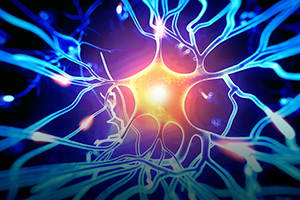Artificial Neurons
 People sometimes tend to think of computers and brains as being analogous. The truth is, they operate very differently, and each has its advantages. Computers, for example, are excellent at performing precise tasks, over and over, at very high processing speeds. The human brain, on the other hand, takes more time to perform computational tasks, but excels at making sense of uncertainty and vagueness that is common in real world applications. It’s for this reason that the developing branch of artificial intelligence (AI) known as “deep learning” is seeking ways to mimic how brains – and more specifically, neurons – work to deal with the unpredictability of the natural world.
People sometimes tend to think of computers and brains as being analogous. The truth is, they operate very differently, and each has its advantages. Computers, for example, are excellent at performing precise tasks, over and over, at very high processing speeds. The human brain, on the other hand, takes more time to perform computational tasks, but excels at making sense of uncertainty and vagueness that is common in real world applications. It’s for this reason that the developing branch of artificial intelligence (AI) known as “deep learning” is seeking ways to mimic how brains – and more specifically, neurons – work to deal with the unpredictability of the natural world.
Researchers recently got one step closer by building a working, artificial version of a neuron. Neurons typically work in unison with other neurons, sending jolts of energy only when they receive a sufficient number of inputs from other neurons. This type of behavior was simulated by placing a tiny bead of phase-change material known as germanium antimony telluride between two electrodes. It starts out lacking any regular atomic structure and, as such, possesses poor electrical conductivity. However, as it is exposed to pulses of electricity, small portions heat up and rearrange themselves to form crystals with much better conductivity properties. Eventually, the bead becomes fully conductive, passing current from electrode to electrode in a fashion similar to the way a neuron would fire.
This design is similar to real neurons in another way – it’s unpredictable. Fluctuations within the system imply that any given input will not necessarily produce the same result, since the crystallization processes can vary from cycle to cycle. The next step is to link the artificial neurons into networks and attach them to sensors to test their performance with regard to tasks like speech or facial recognition.
For information: Evangelos Eleftheriou, IBM Research, Saumerstrasse 4, Ch-8803 Ruschlikon, Switzerland; phone: +41-44-724-8111; Web site: http://www.research.ibm.com/index.shtml